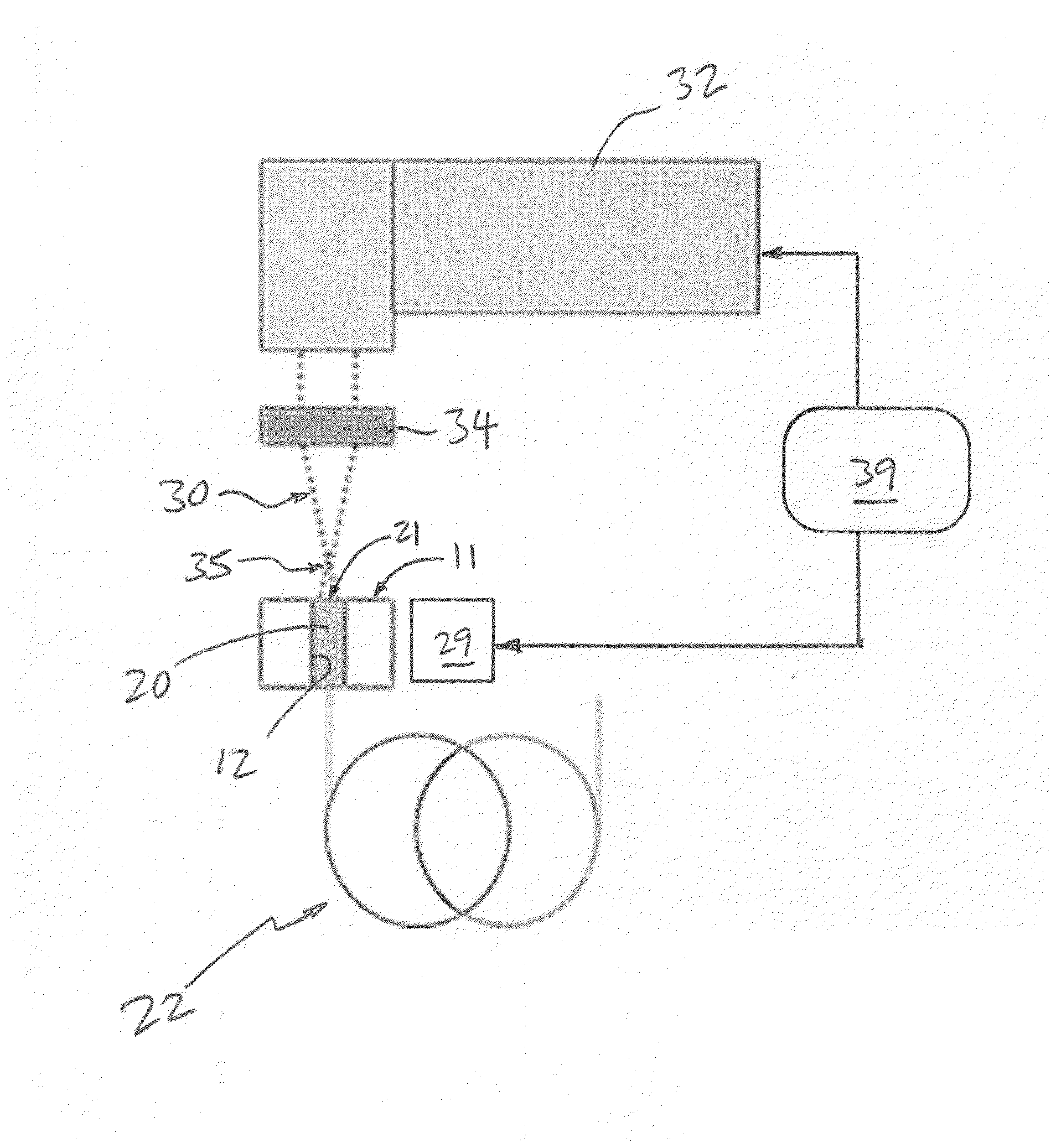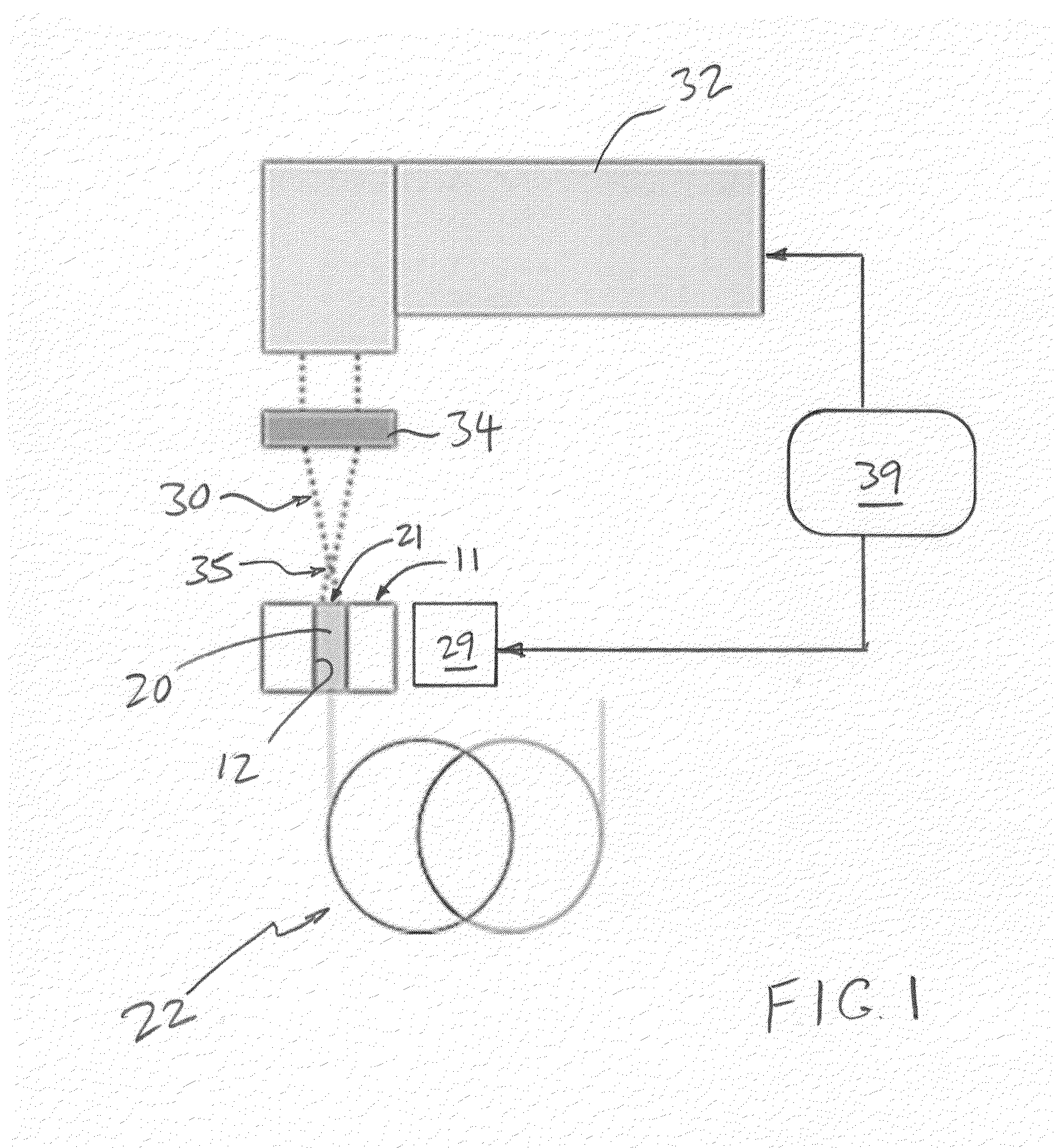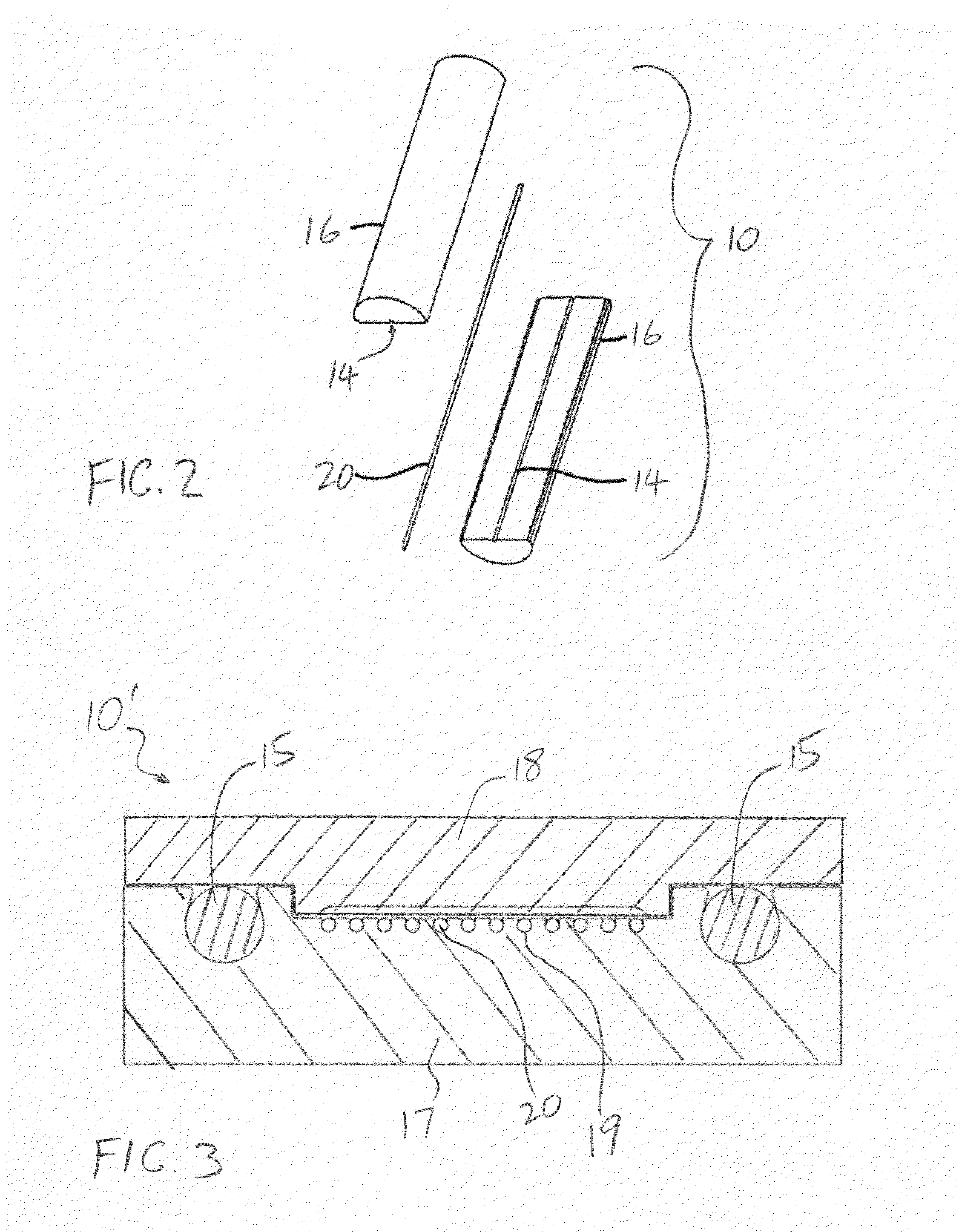Method of laser polishing a connectorized optical fiber and a connectorized optical fiber formed in accordance therewith
a technology of connectorized optical fibers and laser polishing, which is applied in the field of optical fibers, can solve the problems of excessive light loss, undesirable optical effects, and rough optical surfaces, and achieve the effect of effective, efficient and reliable methods
- Summary
- Abstract
- Description
- Claims
- Application Information
AI Technical Summary
Benefits of technology
Problems solved by technology
Method used
Image
Examples
case 1
[0048[0049]Pre-laser polish radius of curvature of fiber end face=7.88 mm[0050]Post-laser polish radius of curvature of fiber end face=8.82 mm
case 2
[0051[0052]Pre-laser polish radius of curvature of fiber end face=5.59 mm[0053]Post-laser polish radius of curvature of fiber end face=12.07 mm
[0054]Accordingly, laser polishing also can be effective to “correct” the radius of curvature of the fiber end face after it has been subject to rough polishing associated with shaping the ferrule end face, thus reducing return losses associated with the fiber end face.
[0055]Further, in the presence of a high index layer introduced by previous mechanical grinding and / or polishing at the fiber end face, it has been found that the laser polishing process in accordance with the present invention could also cause the fiber material in such layer to reduce in index of refraction, thus further reducing return losses. Thus if there is material having a high index film / layer present at the fiber end face prior to laser polishing, the index of refraction in that layer of material is decreased by the laser beam during laser polishing process. According...
PUM
| Property | Measurement | Unit |
|---|---|---|
| surface roughness | aaaaa | aaaaa |
| surface roughness | aaaaa | aaaaa |
| focal length | aaaaa | aaaaa |
Abstract
Description
Claims
Application Information
 Login to View More
Login to View More - R&D
- Intellectual Property
- Life Sciences
- Materials
- Tech Scout
- Unparalleled Data Quality
- Higher Quality Content
- 60% Fewer Hallucinations
Browse by: Latest US Patents, China's latest patents, Technical Efficacy Thesaurus, Application Domain, Technology Topic, Popular Technical Reports.
© 2025 PatSnap. All rights reserved.Legal|Privacy policy|Modern Slavery Act Transparency Statement|Sitemap|About US| Contact US: help@patsnap.com



